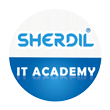DevOps Engineer Training Pakistan is transforming how IT professionals build careers in one of the industry’s fastest-growing specializations. Pakistan’s software houses and tech startups desperately need engineers who can bridge development and operations, automate infrastructure, and manage containerized applications at scale. Yet qualified DevOps professionals remain scarce, creating exceptional opportunities for those willing to invest in systematic skill development from Linux fundamentals through Kubernetes orchestration.
Prerequisites and Mindset Shift
Before diving into DevOps training, understand what you’re getting into. DevOps isn’t just learning tools—it’s adopting a mindset that breaks down traditional barriers between developers and operations teams.
You need basic computer literacy and willingness to work with command-line interfaces. Prior programming experience helps but isn’t mandatory. What matters most is problem-solving attitude, comfort with continuous learning, and patience when troubleshooting complex systems.
The mindset shift is crucial: DevOps professionals think about automation, repeatability, and reliability. Instead of manually configuring servers, you write code that configures infrastructure. Rather than hoping deployments work, you build pipelines that test and validate automatically. This systematic, automation-first approach differentiates DevOps engineers from traditional system administrators.
Phase 1: Linux and System Foundations
Every DevOps journey begins with Linux mastery. Most servers, containers, and cloud infrastructure run Linux, making it the foundational skill for everything else.
Start with core Linux commands for navigation, file manipulation, and process management. Learn ls, cd, cp, mv, rm, ps, top, grep, find, and chmod. These aren’t just commands to memorize—they’re tools you’ll use daily throughout your career.
User and permission management comes next. Understanding how Linux handles users, groups, and file permissions is critical for securing systems. Learn to create users, manage sudo access, and set appropriate file permissions protecting sensitive data.
File systems and disk management require understanding partitions, mounting, and storage concepts. You’ll work with ext4, xfs filesystems and learn commands like df, du, mount, and fdisk.
Networking fundamentals include understanding IP addresses, DNS, routing, and common network troubleshooting tools. Master ping, traceroute, netstat, ss, curl, and wget. DevOps engineers constantly diagnose network issues, so solid networking knowledge is non-negotiable.
Shell scripting ties everything together. Learn bash scripting to automate repetitive tasks, process text files, and build custom tools. Even basic scripts dramatically improve productivity by automating manual work.
Phase 2: Version Control, CI/CD and Automation Tools
Git version control is absolutely essential for modern DevOps. Every code change, configuration update, and infrastructure modification should be tracked through Git.
Master basic Git operations: clone, add, commit, push, pull, branch, merge. Learn branching strategies like GitFlow that teams use for organizing development work. Understand pull requests, code reviews, and collaborative workflows on platforms like GitHub or GitLab.
Continuous Integration and Continuous Deployment (CI/CD) pipelines automate testing and deployment processes. Learn Jenkins or GitHub Actions to build pipelines that automatically test code, build containers, and deploy applications.
Infrastructure as Code (IaC) tools like Terraform and Ansible let you define infrastructure through code rather than manual configuration. Terraform provisions cloud resources declaratively—you describe what infrastructure you want, and Terraform creates it. Ansible automates configuration management across multiple servers simultaneously.
These automation tools eliminate manual, error-prone processes. Instead of spending hours configuring servers by hand, you write code once and execute it repeatedly with perfect consistency.
Phase 3: Containerization with Docker
Docker revolutionized application deployment by packaging applications with all dependencies into portable containers that run consistently across any environment.
Start with Docker fundamentals: images, containers, registries. An image is a template containing your application and dependencies. A container is a running instance of an image. Registries like Docker Hub store and distribute images.
Learn Dockerfile syntax for building custom images. A Dockerfile contains instructions for assembling your application into a container image. Master commands like FROM, RUN, COPY, EXPOSE, and CMD.
Docker networking enables containers to communicate with each other and external networks. Understand bridge networks, host networking, and custom networks connecting multi-container applications.
Volumes provide persistent storage for containers. Since containers are ephemeral, volumes preserve data beyond container lifecycle—critical for databases and stateful applications.
Docker Compose orchestrates multi-container applications locally. Define your entire application stack in a docker-compose.yml file and launch everything with a single command. This simplifies development and testing of complex applications.
Training programs in Pakistan typically dedicate significant time to Docker because it’s foundational for Kubernetes and modern deployment practices.
Phase 4: Kubernetes and Orchestration
Kubernetes orchestrates containerized applications across clusters of servers, handling scaling, self-healing, and deployment automation that manual processes can’t match.
Kubernetes architecture includes control plane components (API server, scheduler, controller manager) and worker nodes running your applications. Understanding this architecture is essential before diving into daily operations.
Pods are Kubernetes’ smallest deployable units, typically containing one or more tightly coupled containers. Learn to create, inspect, and troubleshoot pods using kubectl get pods, kubectl describe pod, and kubectl logs.
Services expose applications running in pods to network traffic. Understand ClusterIP (internal), NodePort (external via node ports), and LoadBalancer (cloud load balancer integration) service types.
Deployments manage application lifecycle, handling updates, rollbacks, and scaling. A Deployment ensures specified number of pod replicas run continuously, automatically replacing failed pods.
ConfigMaps and Secrets manage configuration data and sensitive information separately from application code. This separation allows deploying the same application code across different environments with environment-specific configurations.
Ingress controllers route external HTTP/HTTPS traffic to services within the cluster, providing load balancing, SSL termination, and name-based virtual hosting.
Scaling encompasses both horizontal pod autoscaling (increasing pod count based on metrics) and cluster autoscaling (adding nodes when resource limits are reached).
Kubernetes training in Pakistan covers these concepts through hands-on labs where you actually deploy and manage clusters, not just watch videos. Programs offering 14+ hours of practical Kubernetes work provide the foundation you need.
Phase 5: Observability, Monitoring and Security
Running applications in production requires comprehensive monitoring, logging, and security practices.
Prometheus collects time-series metrics from applications and infrastructure. Learn to write queries using PromQL, set up metric exporters, and configure alert rules.
Grafana visualizes Prometheus metrics through customizable dashboards showing system health, application performance, and business metrics in real-time.
Logging strategies centralize logs from distributed applications. Learn ELK stack (Elasticsearch, Logstash, Kibana) or alternatives like Loki for aggregating, searching, and analyzing logs across your infrastructure.
Alerting ensures problems get noticed before users complain. Configure alert rules in Prometheus triggering notifications to Slack, email, or PagerDuty when metrics exceed thresholds.
Security best practices include scanning container images for vulnerabilities, implementing pod security policies, using network policies to restrict traffic between pods, managing secrets properly, and applying least-privilege access controls throughout your cluster.
Career Path and Certifications in Pakistan
DevOps careers in Pakistan offer exceptional growth potential and compensation significantly above traditional IT roles.
Entry-level DevOps engineers with 1-2 years experience earn PKR 80,000-120,000 monthly. Mid-level engineers with 3-5 years experience command PKR 150,000-250,000 monthly. Senior DevOps engineers and architects with 6+ years experience earn PKR 300,000-500,000+ monthly, especially at companies serving international clients or offering remote work with foreign firms.
Certifications validate your skills to employers. The Certified Kubernetes Administrator (CKA) demonstrates practical Kubernetes administration skills through hands-on exam requiring you to solve real problems in live clusters. The Certified Kubernetes Application Developer (CKAD) focuses on developing and deploying applications in Kubernetes.
Cloud platform certifications complement Kubernetes knowledge. AWS Certified DevOps Engineer, Azure DevOps Engineer Expert, and Google Cloud Professional DevOps Engineer certifications prove expertise in cloud-specific DevOps practices.
Linux Foundation Certified System Administrator (LFCS) validates Linux skills—the foundation of your DevOps expertise.
Pakistani training providers including Infotics Institute offer comprehensive DevOps programs covering the full tool stack. Online platforms like KodeKloud provide interactive labs letting you practice on real infrastructure rather than just watching videos.
Build your skills through Sherdil’s DevOps Bootcamp, which maps the complete Linux-to-Kubernetes path with mentored lab work ensuring you gain practical experience, not just theoretical knowledge.
How to Choose Quality DevOps Training in Pakistan
Not all DevOps training delivers equal results. Evaluate programs carefully before investing time and money.
Hands-On Lab Access: The most critical factor. Programs must provide real lab environments where you configure servers, deploy containers, and manage Kubernetes clusters. Videos alone don’t build the muscle memory needed for actual DevOps work. Look for programs offering at least 60% hands-on lab time.
Instructor Expertise: Learn from practitioners working in DevOps roles, not just teachers who studied the subject. Instructors should share real-world war stories, common pitfalls, and practical troubleshooting techniques beyond official documentation.
Cohort vs Self-Paced: Cohort programs with fixed schedules and peer groups dramatically improve completion rates compared to self-paced courses. Accountability and peer learning accelerate progress.
Post-Training Support: Quality programs offer job placement assistance, resume reviews, interview preparation, and continued access to instructors after course completion. This support bridges the gap between training and employment.
Tools Coverage: Comprehensive programs teach the full stack from Linux through Kubernetes, not isolated technologies. Verify curriculum includes Git, CI/CD, IaC, Docker, Kubernetes, and monitoring tools.
Cost and Duration: Typical programs range PKR 50,000-100,000 for 2-3 months intensive training. Cheaper programs often cut corners on lab access or instructor support. More expensive doesn’t guarantee quality, but rock-bottom pricing usually indicates compromises.
Student Outcomes: Ask for verifiable student success stories. How many graduates landed DevOps roles? What companies hired them? What salary increases did they achieve? Legitimate programs provide concrete outcomes, not vague promises.
Red flags include programs with no hands-on components, instructors without industry experience, inability to provide student testimonials, unrealistic promises of instant high-paying jobs, and lack of clear curriculum.
Taking Your Next Step
The path from Linux beginner to Kubernetes-proficient DevOps engineer is challenging but achievable with structured training and consistent effort. Pakistani IT professionals who invest in DevOps skills position themselves for high-growth careers as local and international companies expand cloud infrastructure.
Success requires more than watching videos—you need hands-on practice configuring systems, troubleshooting problems, and building automation. Choose training programs emphasizing practical labs over theoretical lectures.
The DevOps skills shortage in Pakistan creates opportunities for career transformation. Companies struggle to find qualified candidates, driving up salaries and creating demand across startups, software houses, and multinational corporations.
Your journey begins with a single decision: commit to systematic skill development following the proven path from Linux foundations through containerization to Kubernetes orchestration. The market rewards those who make this investment with careers that combine technical challenge, professional growth, and exceptional compensation.
Ready to transform from Linux novice to Kubernetes-powerhouse DevOps engineer? Enroll in Sherdil’s DevOps Bootcamp today and follow our guided Linux → Automation → Containers → Kubernetes track under expert mentors. Speak with our training advisors to map your path into high-demand DevOps roles in Pakistan.

